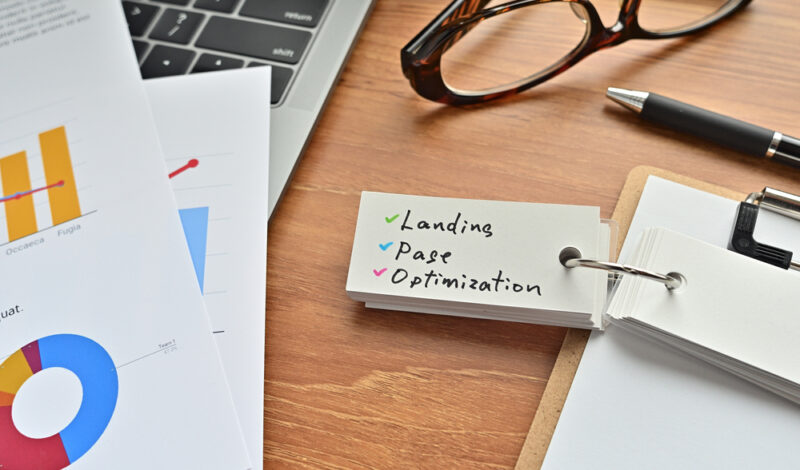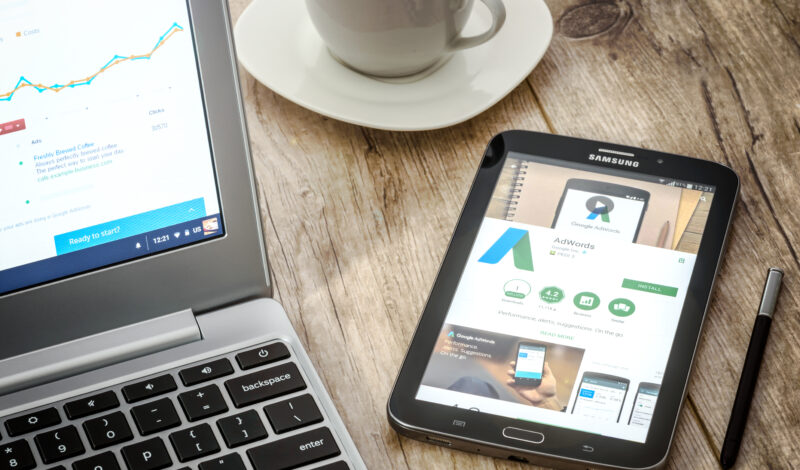A landing page is a landing page used to achieve a specific objective. Most often the customer is directed to it after moving from an advertisement promoting a particular action. A landing page is designed with one objective or call to action (CTA). How to achieve it effectively?
TAKE ACTION
This is a particular type of website whose main objective is to encourage the user to take action. It usually pursues a single, precisely defined objective. It may be to encourage the user to download an eBook, present a new product, collect sign-ups for a webinar, offer a discount or communicate a message.
LP is used primarily to collect leads, which is simply the contact details of users, potential customers. However, the most important element on a Landing Page is the CTA button – CALL TO ACTION.
EFFECTIVE LANDING PAGE
There are many conditions that need to be met in order for our Landing Page to be effective and meet expectations. It is important that before you start working on your LP you should ask yourself a few questions such as:
- Is the page an extension of a clicked ad?
- Does the user know what the page is about when they enter it?
- Does your page have a CTA? (call to action)
- Is the headline and CALL TO ACTION button visible on the page?
- Does the page really fulfil a single objective?
- What information do you plan to collect in the form?
- Does the information gathered in the form allow you to take further action?
- Is the form prepared in accordance with all marketing consents?
- Does your form have validation?
- Does the graphic design relate to the message of the website?
- Has the LP used benefit language?
- Are the benefits to encourage the user clearly communicated?
- Does the page contain all the key information?
- Is the content understandable for the target audience?
- Is the content free of grammatical errors?
- Have elements been included to demonstrate credibility? (social proof)
- Has Google Analytics code been added to the website?
- Are conversions correctly counted?
- Have marketing codes been added? (FB pixel, Google Ads etc.)
- Does the website have an SSL certificate?
- Does the website have a privacy and cookie policy?
- Is the website responsive?
A website should, above all, inspire trust and encourage action. Therefore, it is important that it has all aspects of social proof. Moreover, it can be recommendations, logos, customer reviews, credible characters, etc., i.e. everything that confirms that we can actually trust the company and undertake the task.
LESS IS MORE
The main focus of the website should be the task at hand – a single one. Take the time to develop an LP strategy and refine the communication. A catchy headline and a highly visible CTA can be half the battle. To get even closer to success you should reduce or preferably remove elements that should not be there. For example, the menu. If the page is to encourage the user to perform a single action, unnecessary elements should be avoided. It is worth remembering that anything that distracts the user from completing a specific objective lowers conversion. Specific, precise and targeted pages convert better than pages with too much going on. The fewer distractions the greater the satisfaction with the results.
MARKETING PERSONA
A good practice when working on a Landing Page is to create a persona. This allows us to more effectively prepare the content on which our LP will be based. Through a detailed analysis of the persona we have a greater influence on the acquisition of a possible lead.
Examples of questions to ask:
- Who is he/she?
- How old is he/she likely to be?
- What is his/her educational background?
- Where does he/she live? (location)
- What does he/she do?
- How does he/she spend his/her free time?
- What goal does he/she want to achieve with your product/service?
- What is his/her motivation?
- How can you influence his/her decision?
The more detailed the questions, the closer to the target group you want to reach. It’s worth pausing for a moment at this type of “task”. Its result can have a huge impact on conversion results. Another element contributing to a good conversion is the benefit language we should use when developing content. Write in such a way that the recipient can feel the benefit of buying your product or service.
DESIGN IN A NUTSHELL
All the information gathered should be presented in such a way as to help the user as much as possible on the way to completing the task imposed by us. Not to distract, discourage, mislead or arouse negative feelings. The key elements of the page should be visible immediately after entering it. These are: a precisely worded headline, a call to action button, a form, graphics and photos presenting the product.
TIME IS CRUCIAL!
Despite having a great product, webinar or fresh eBook, you need to pay close attention to the timing of your LP. No one likes to wait long, especially web users. Particularly page load time is very important, as is responsiveness. Testing is also a good habit. They will allow you to eliminate any unpleasant surprises. Good luck!



